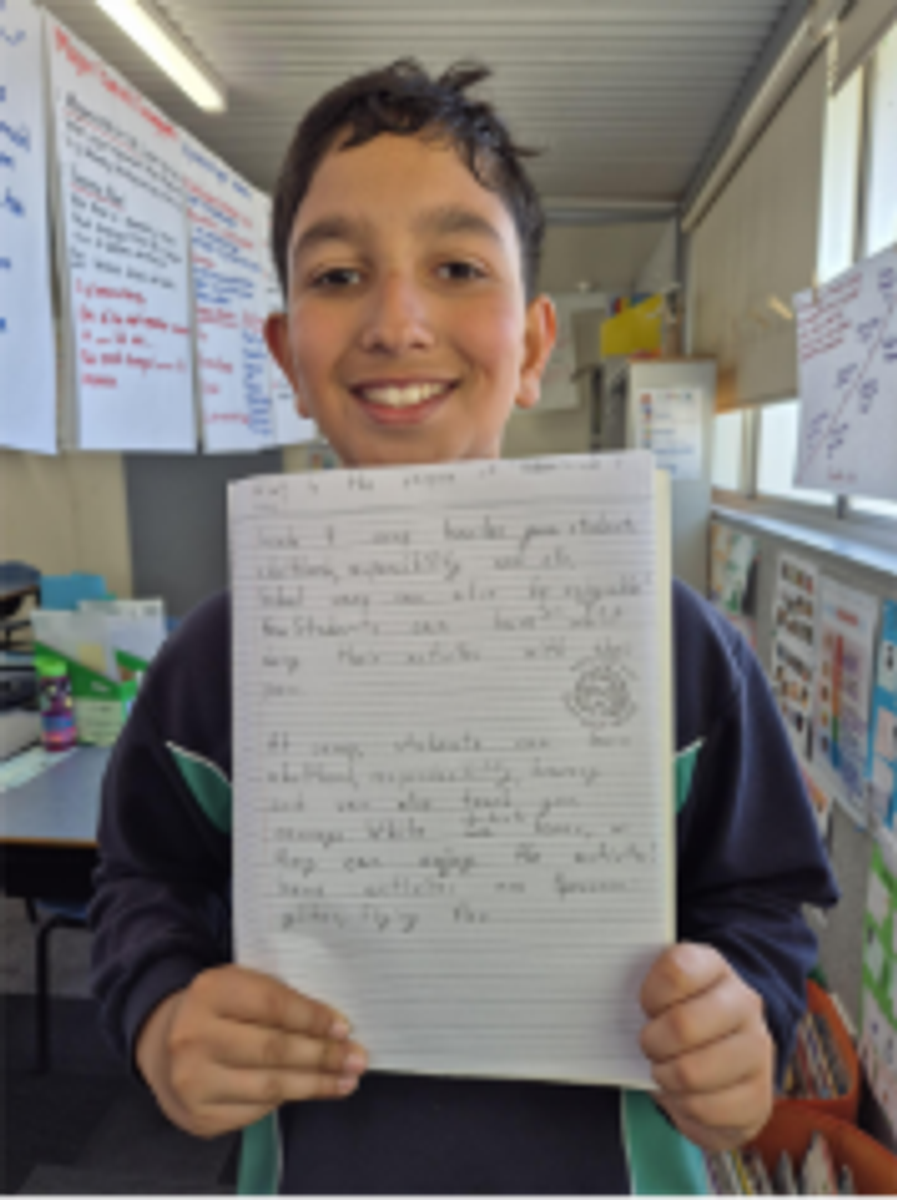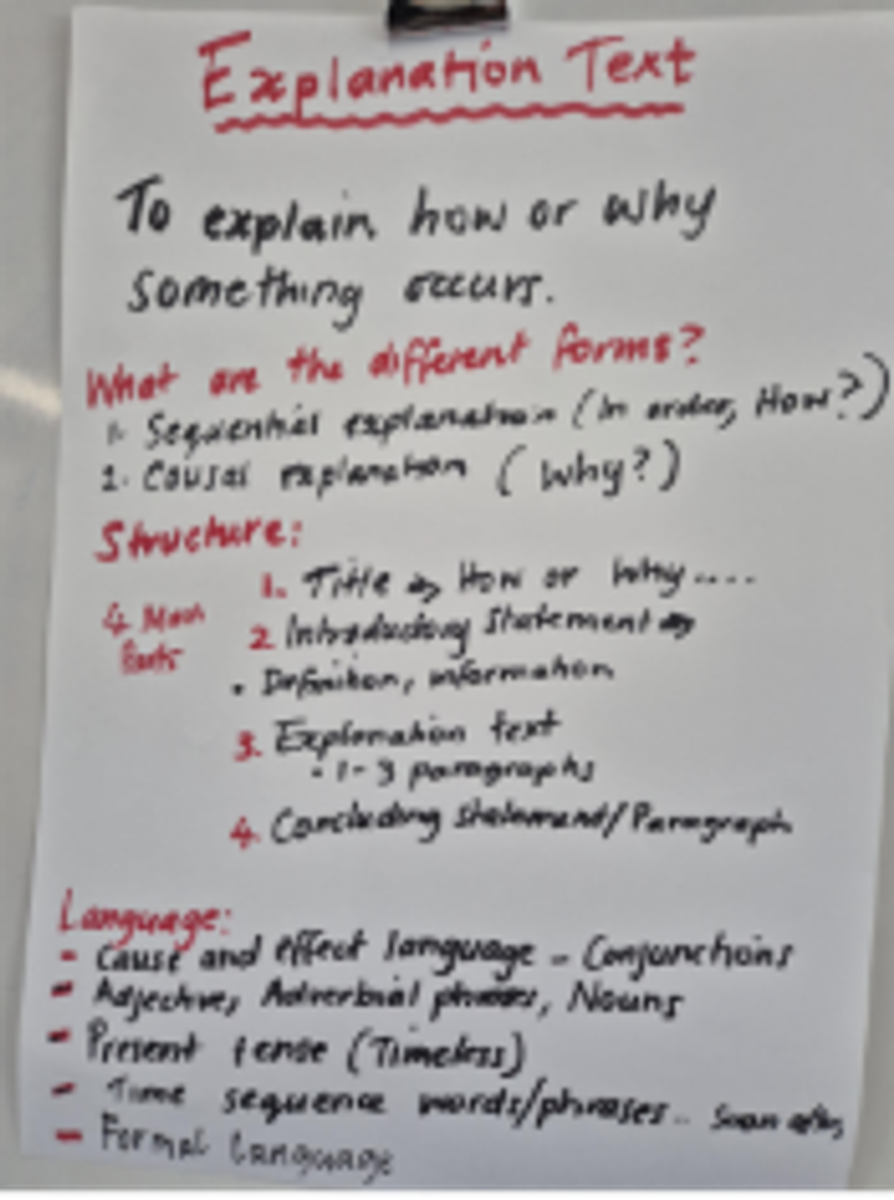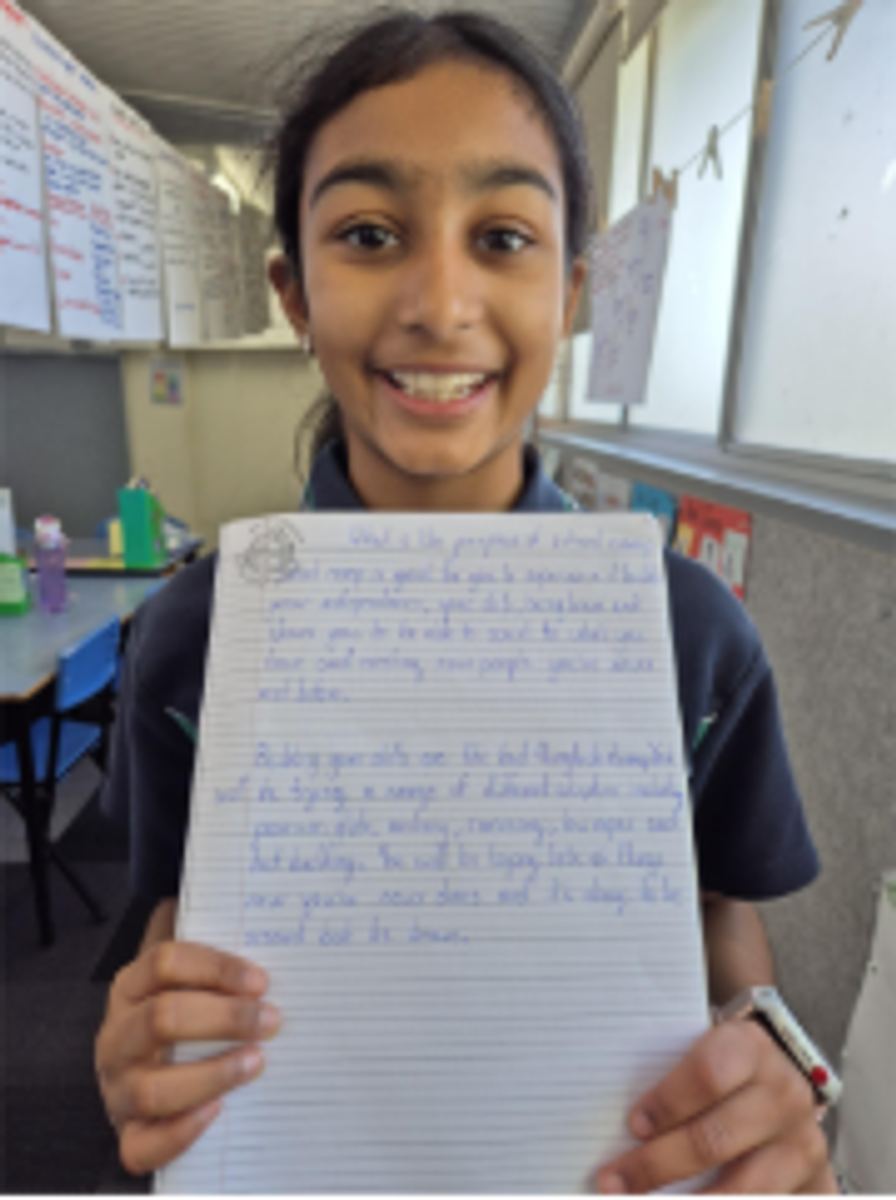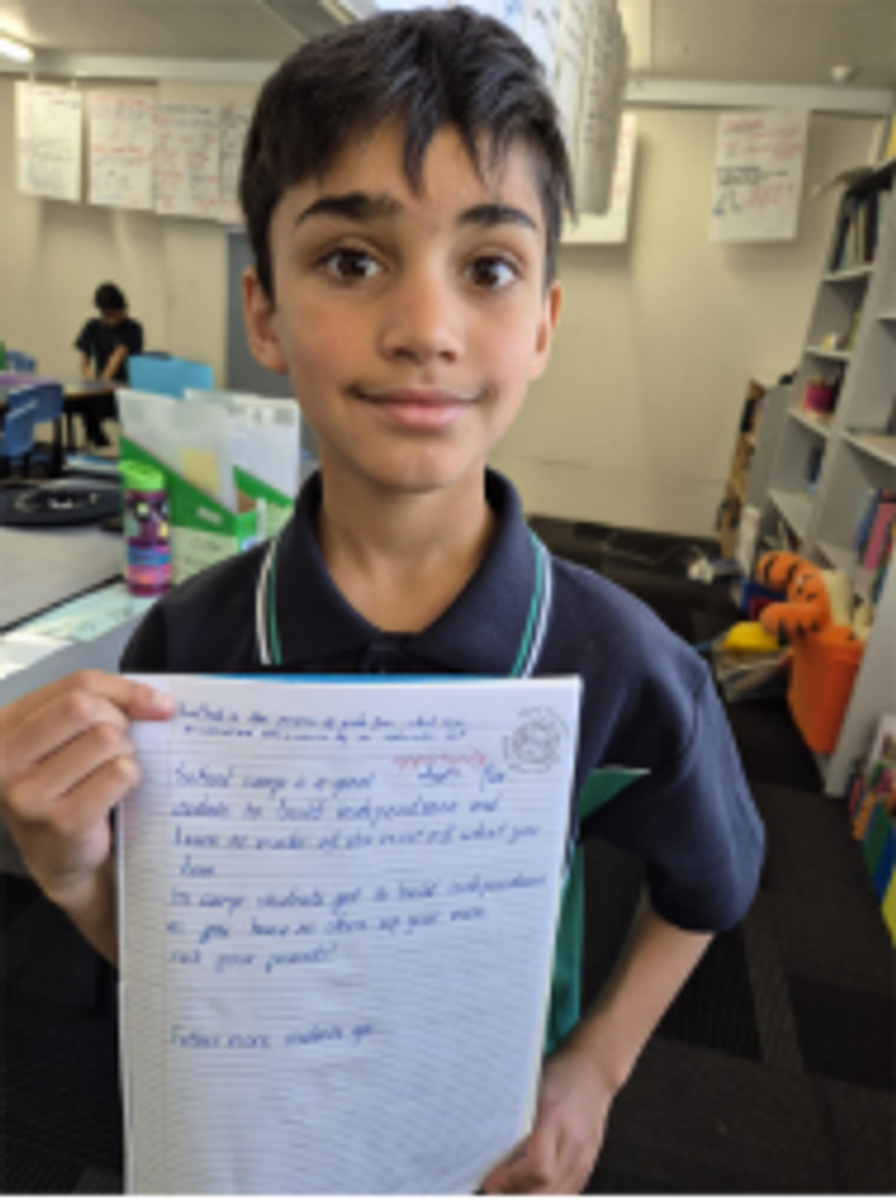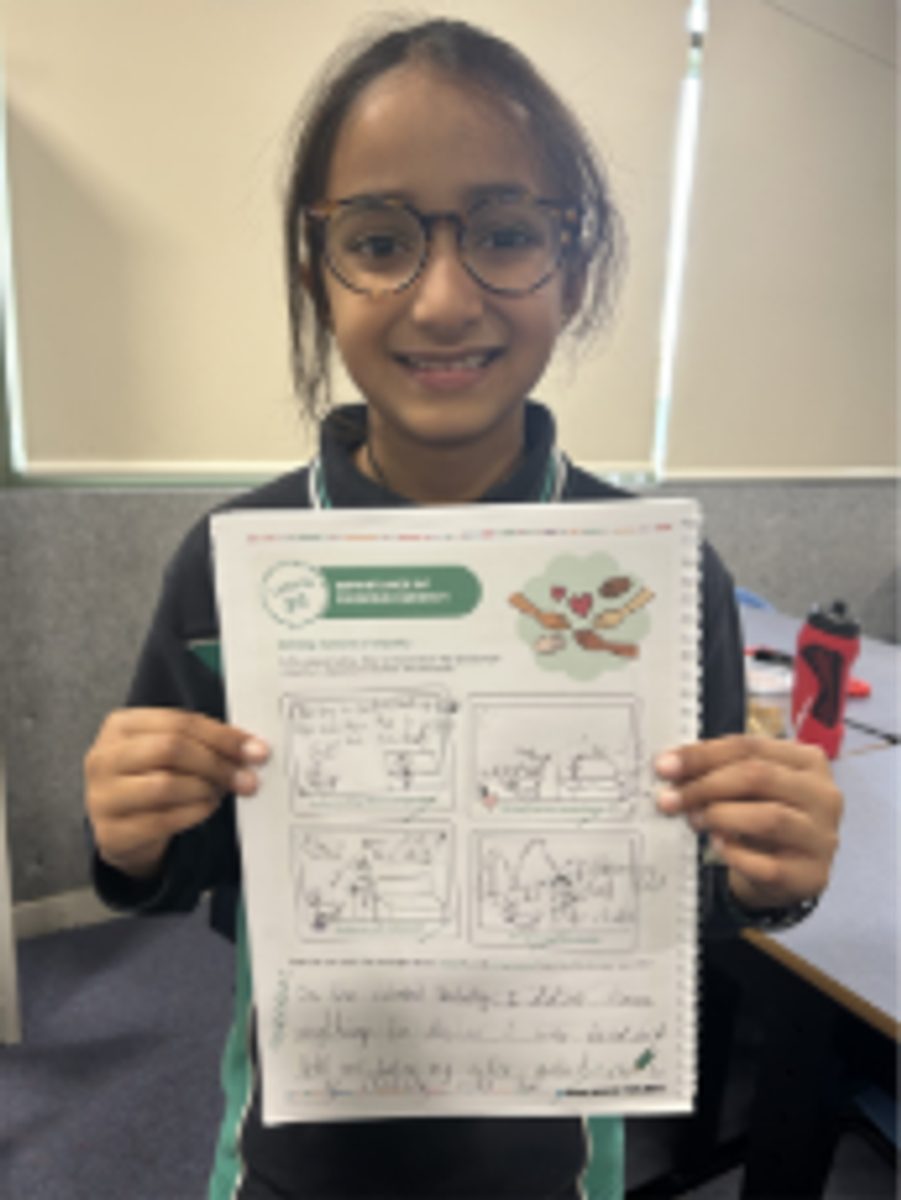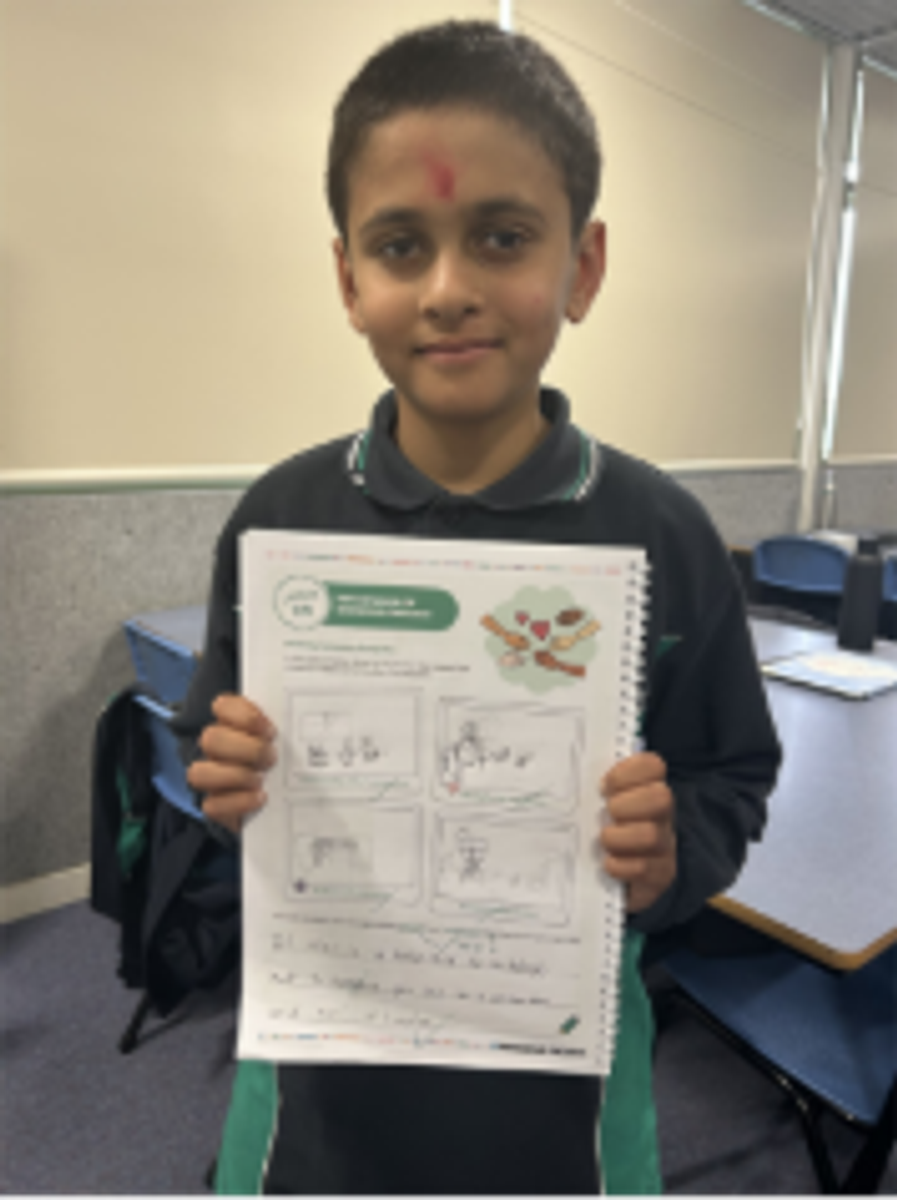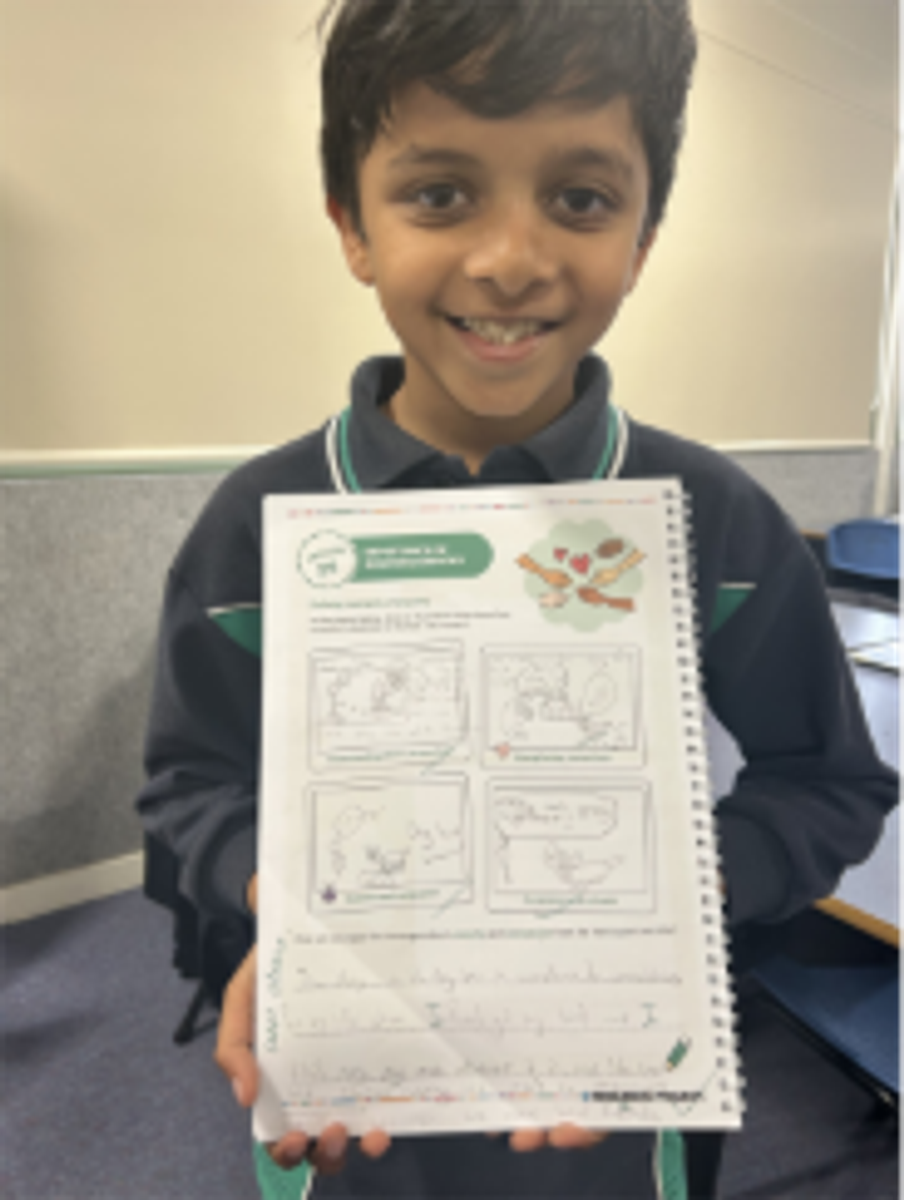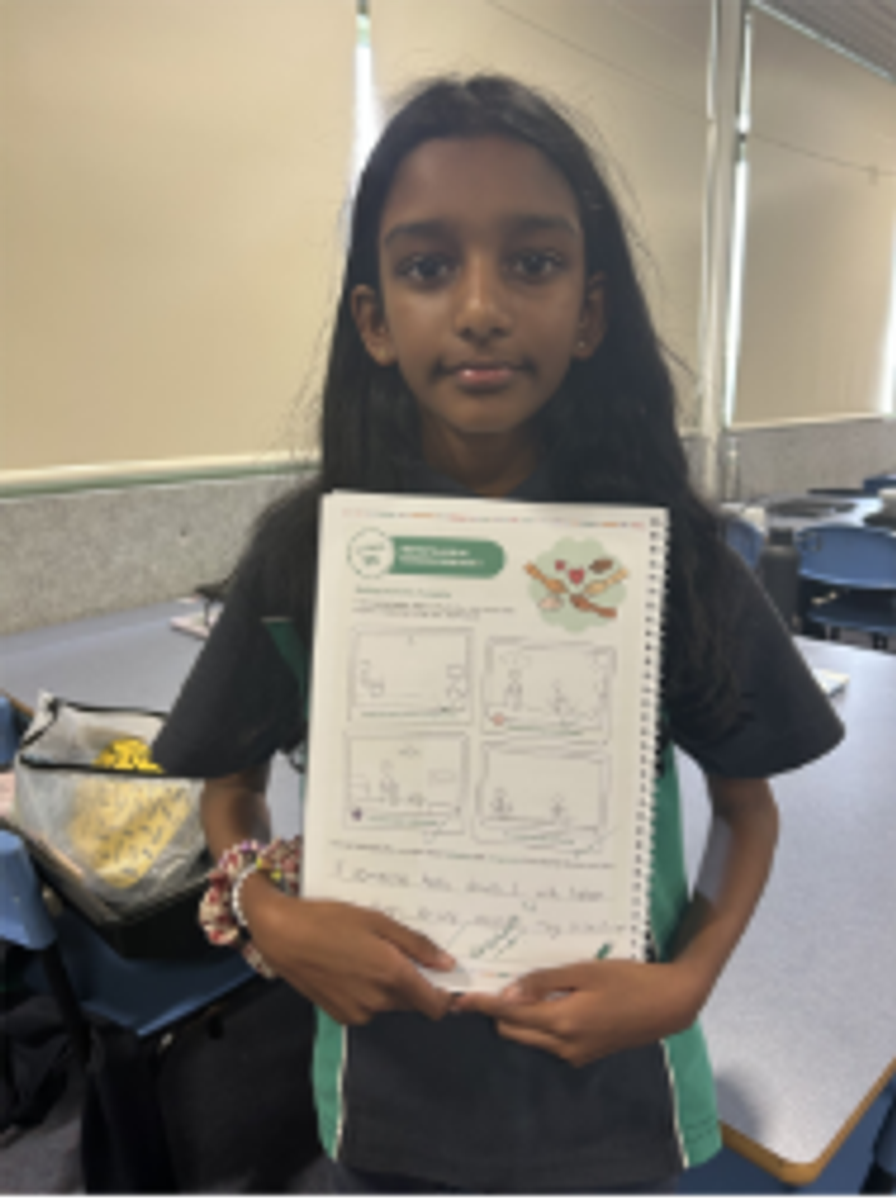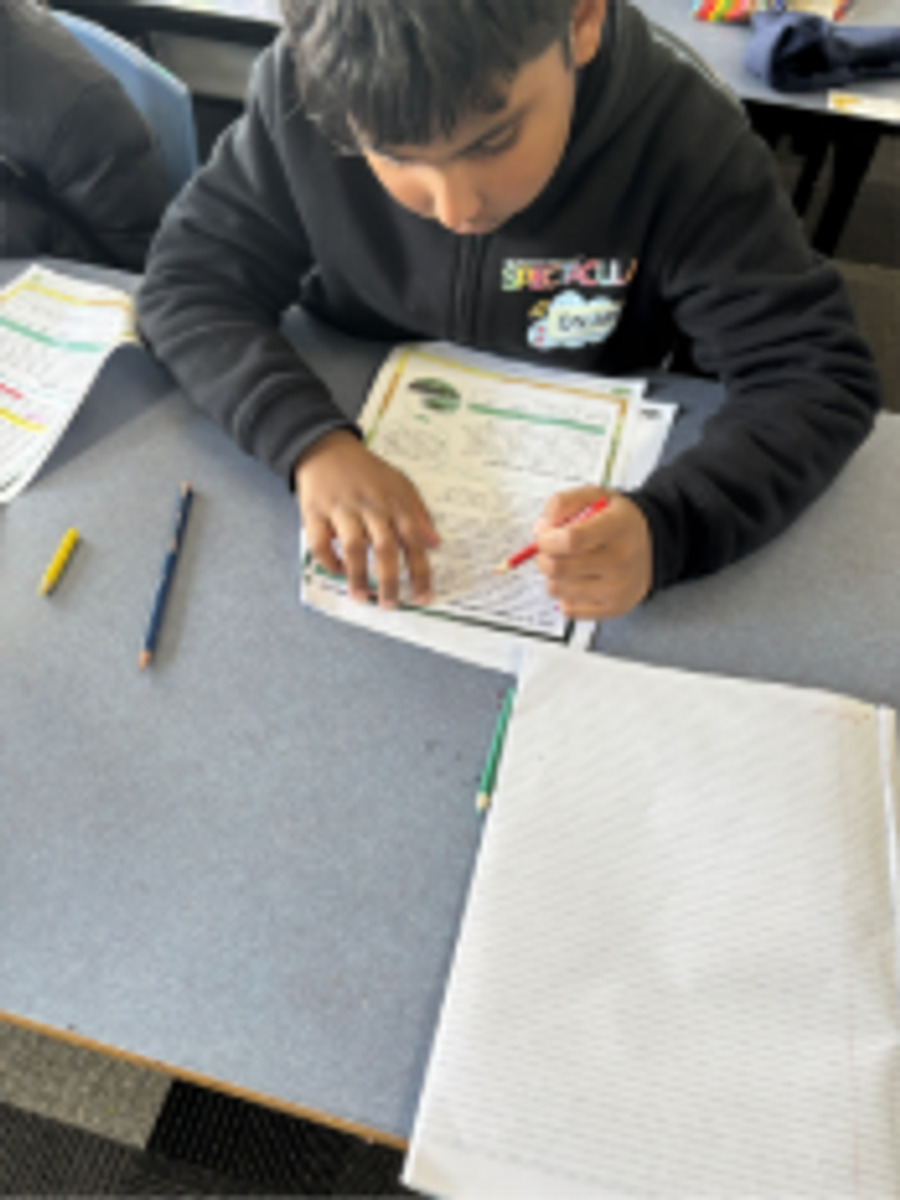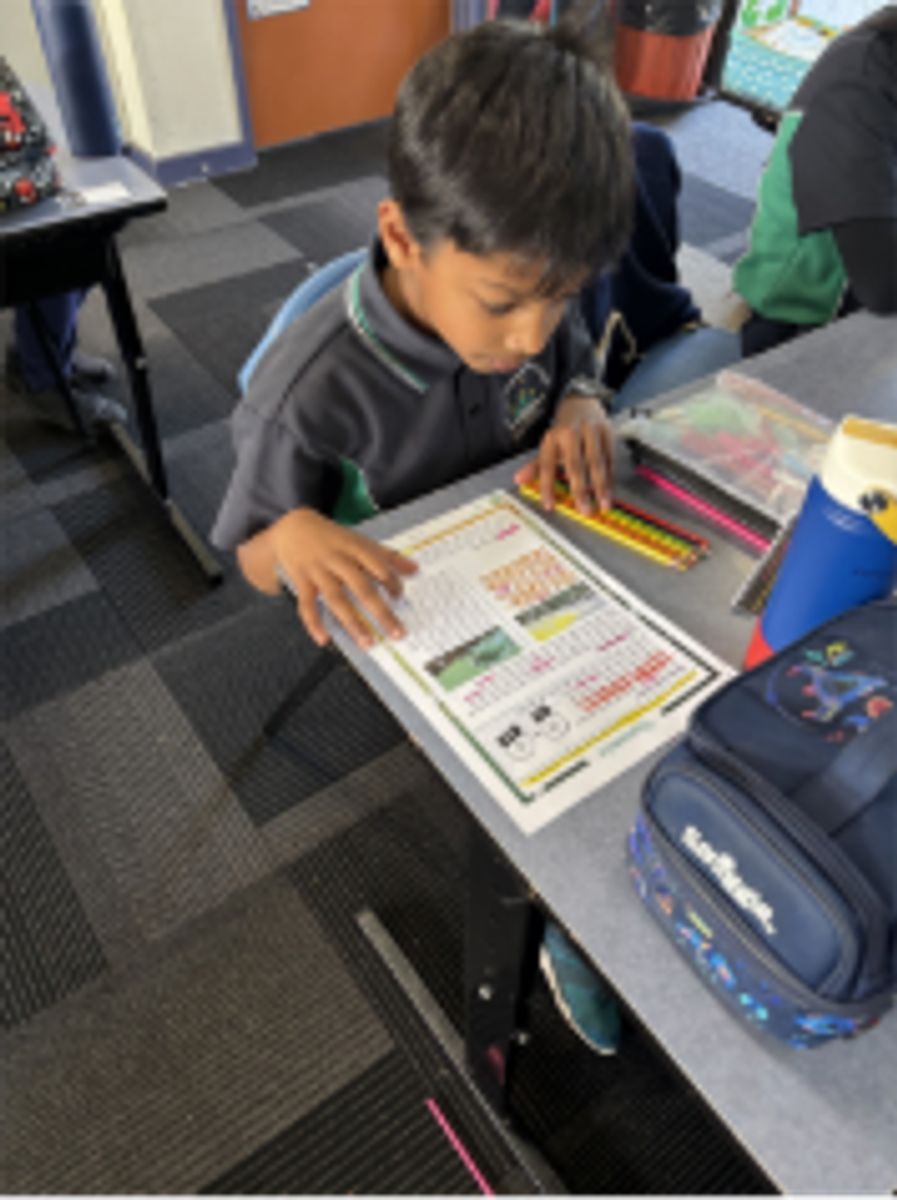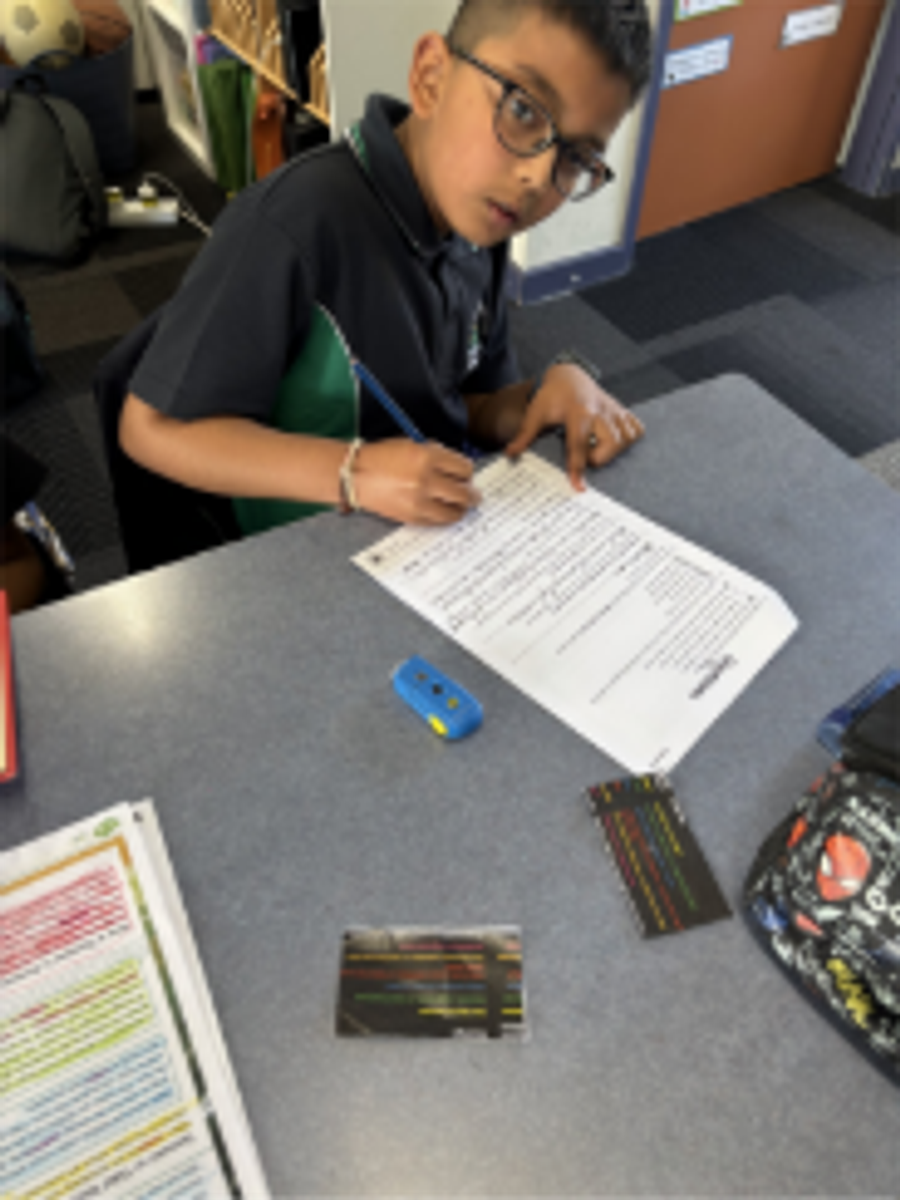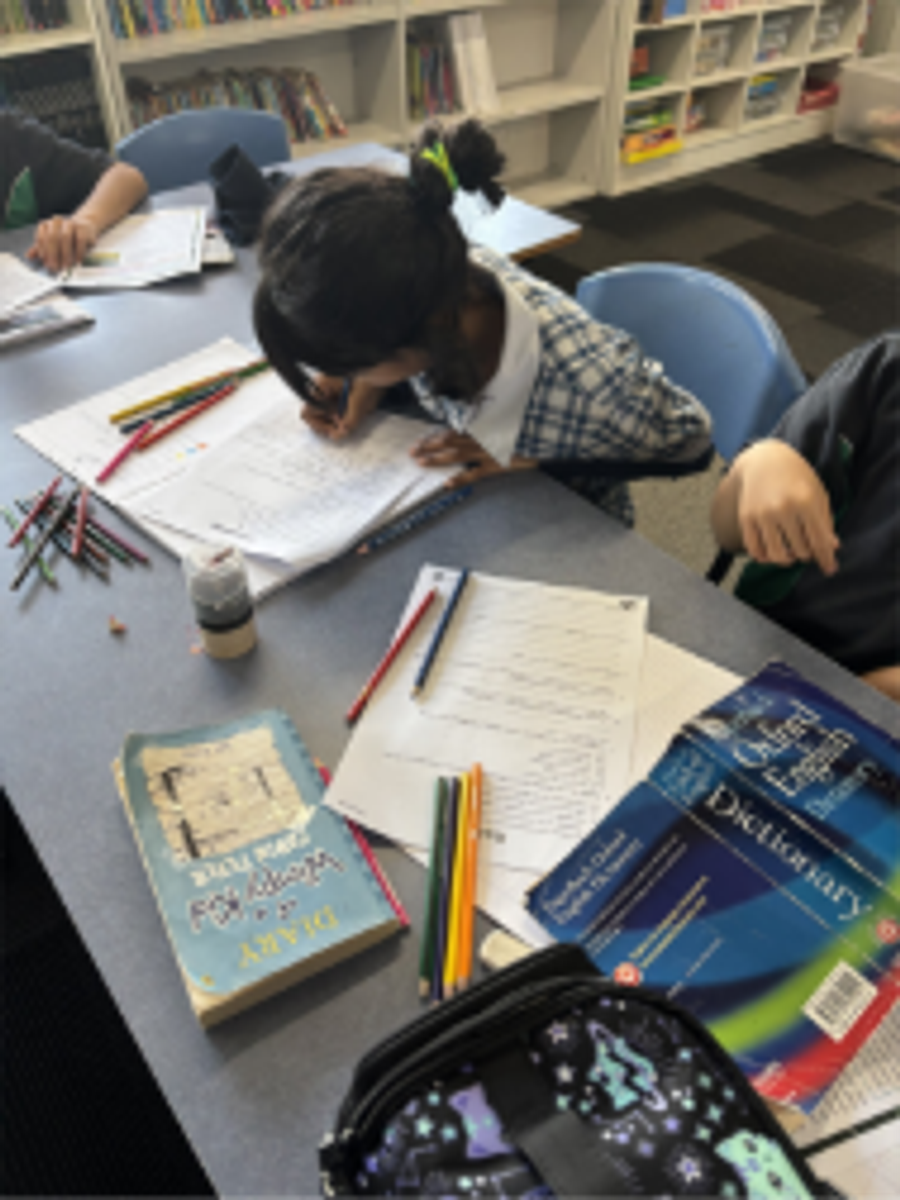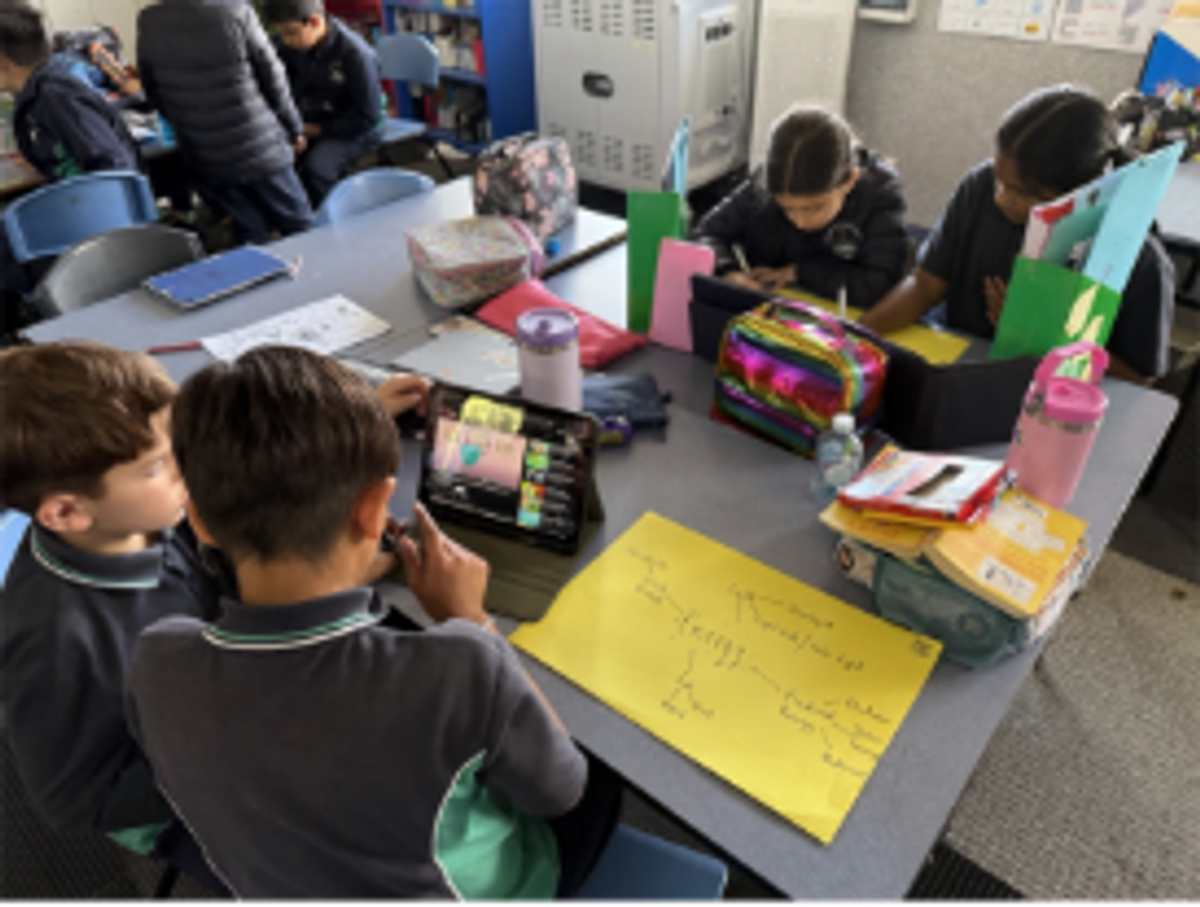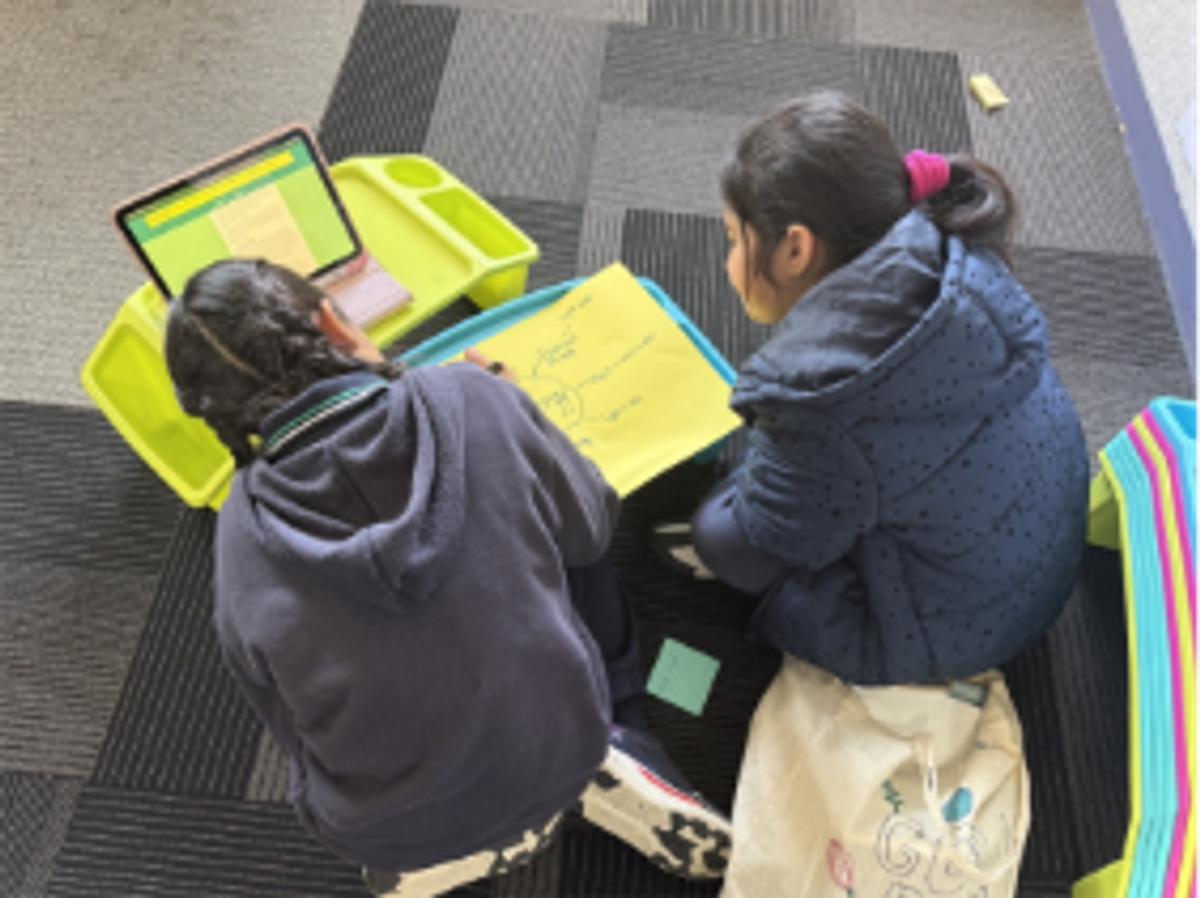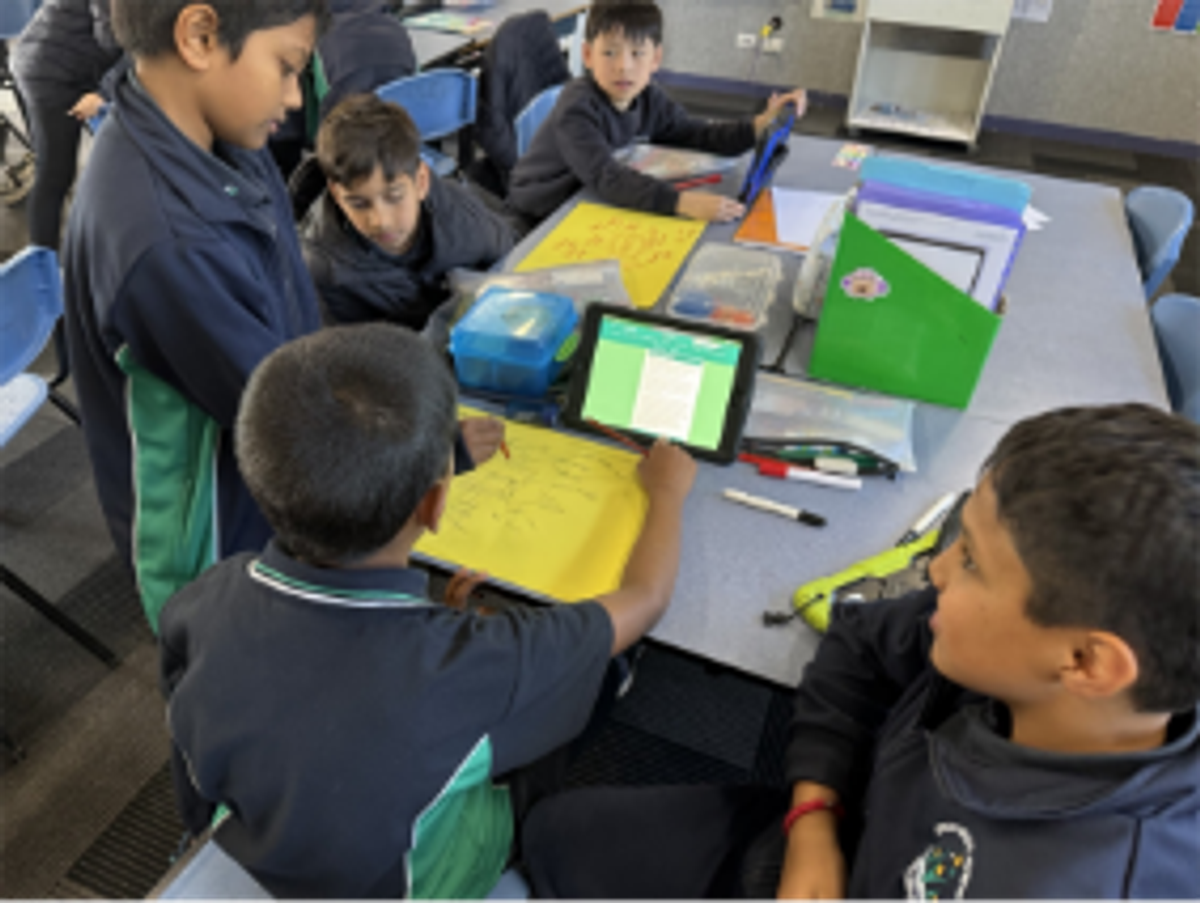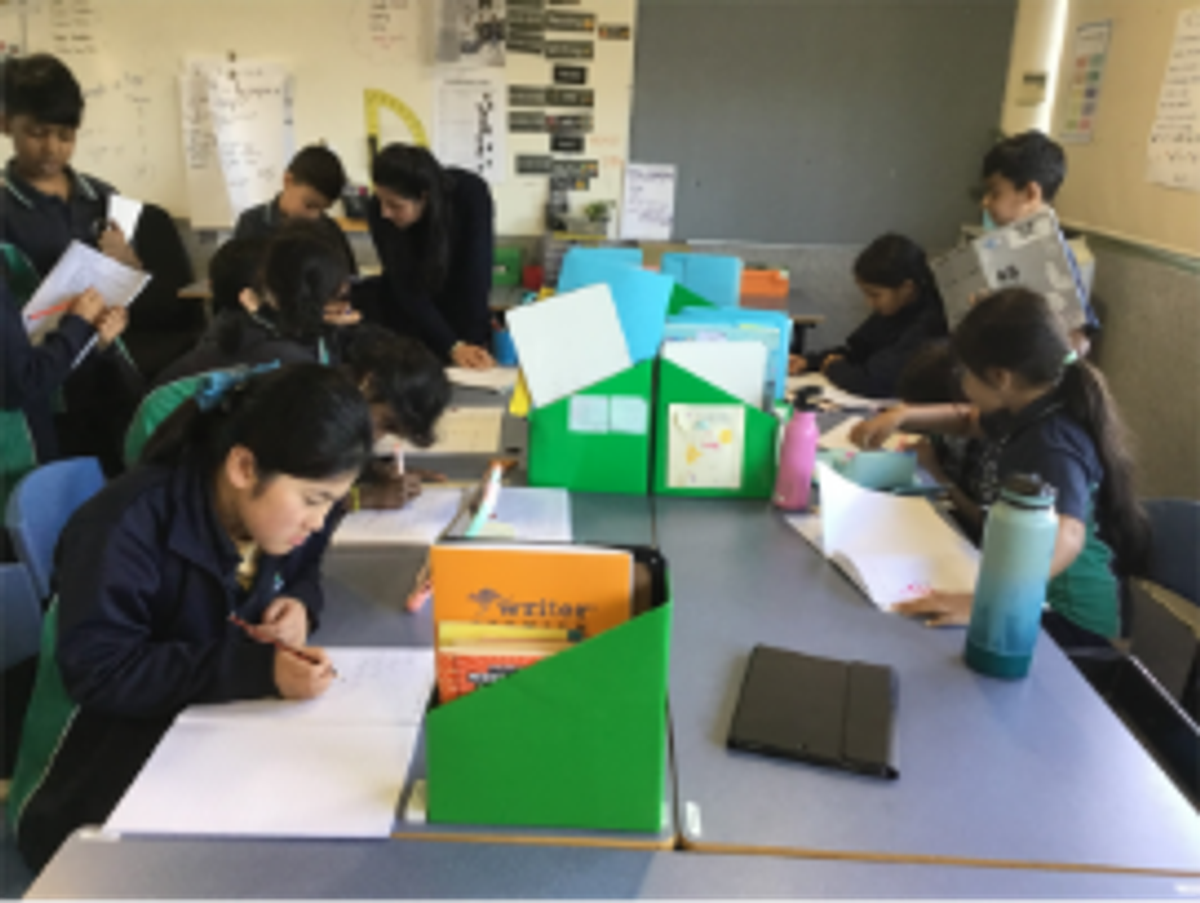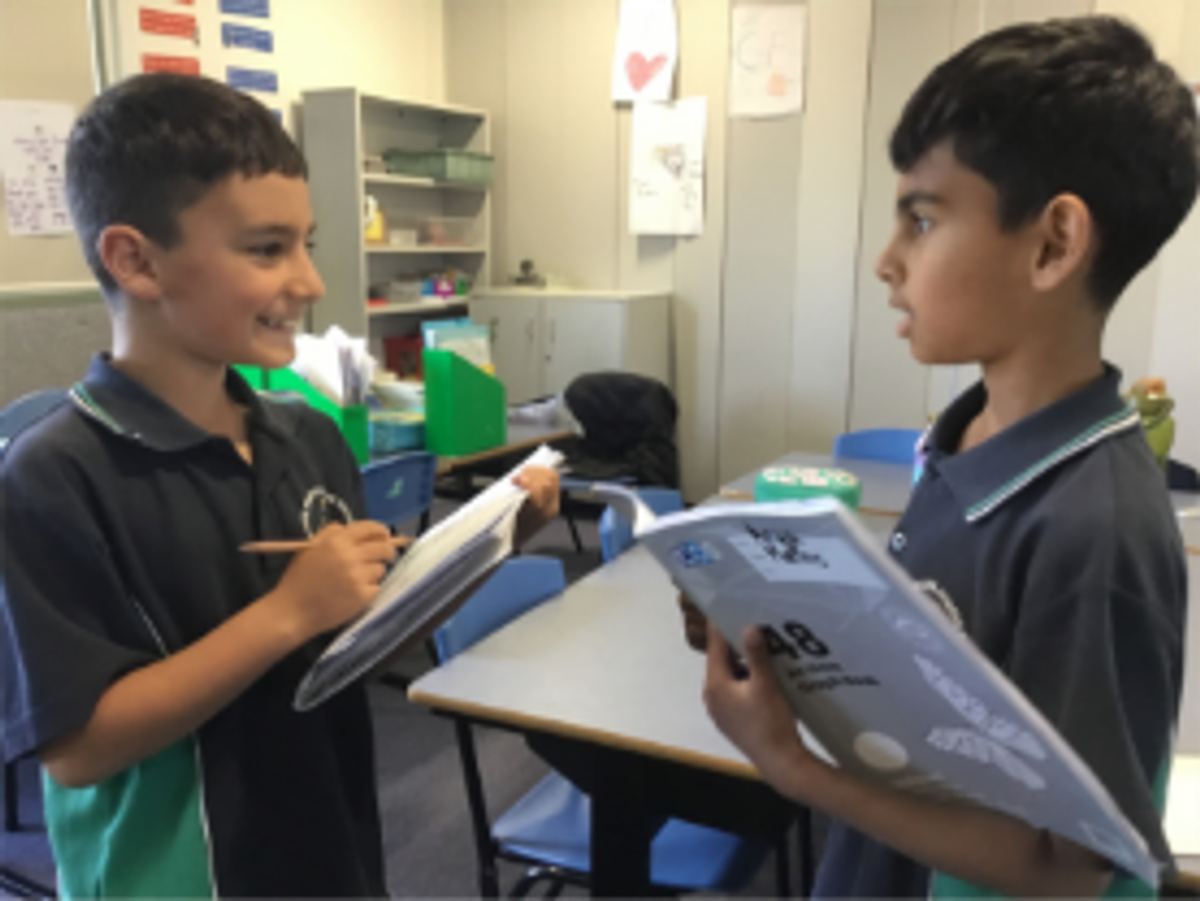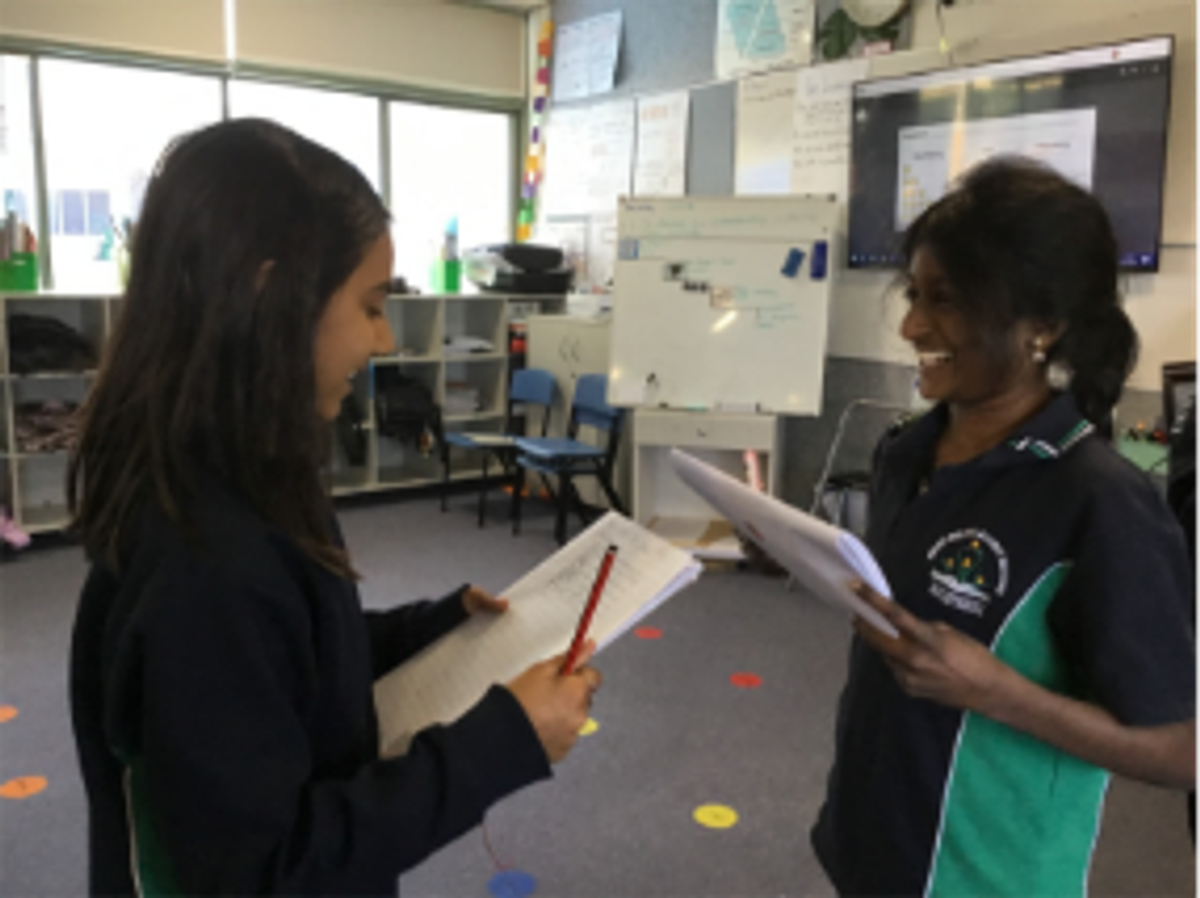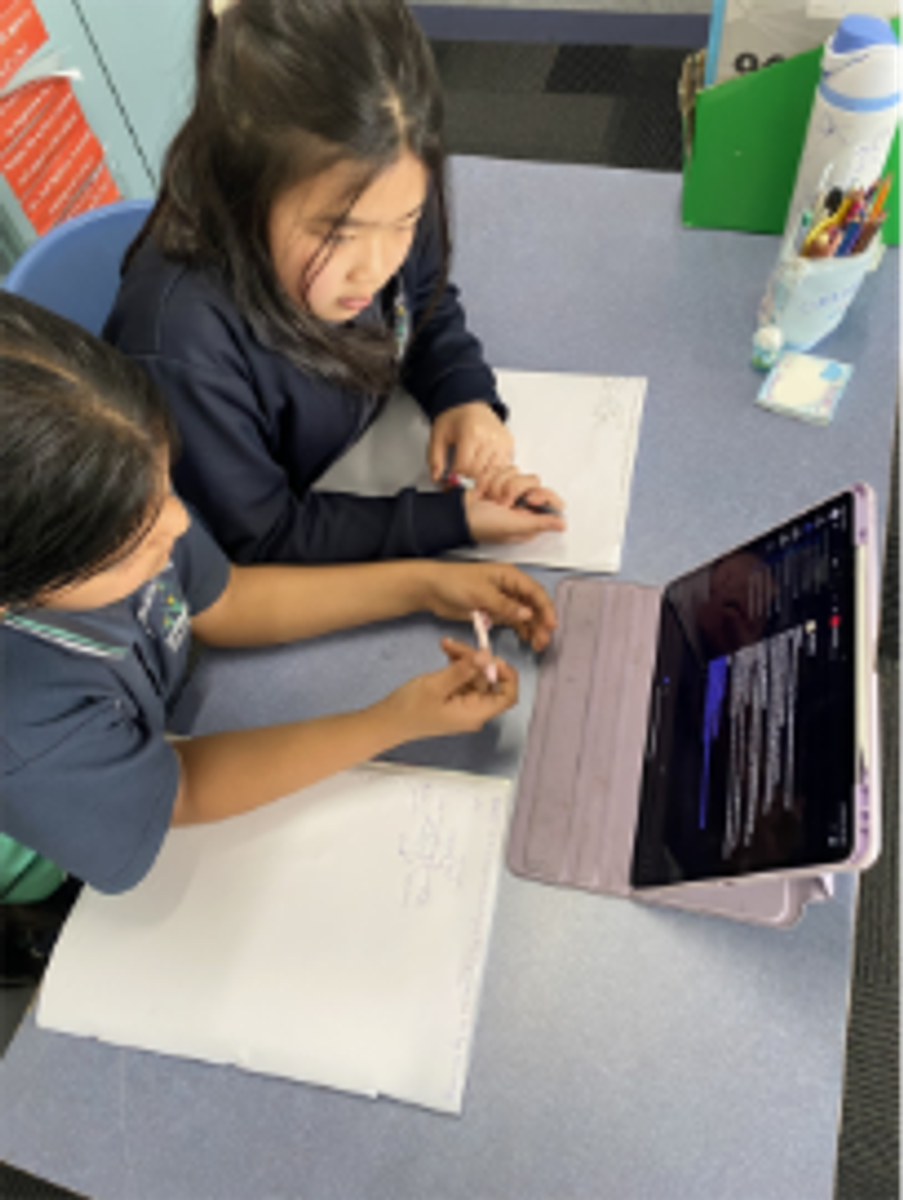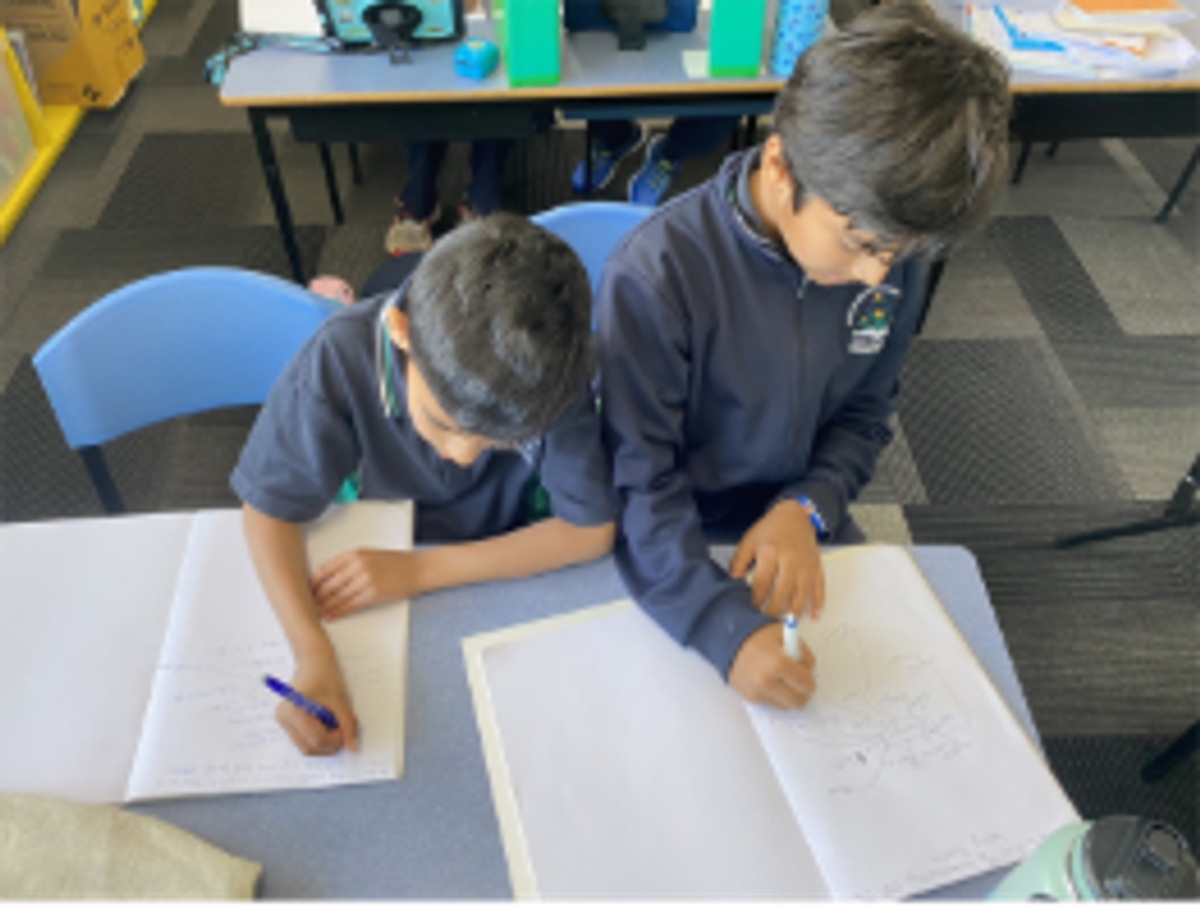Term 4 Level 4 Newsletter
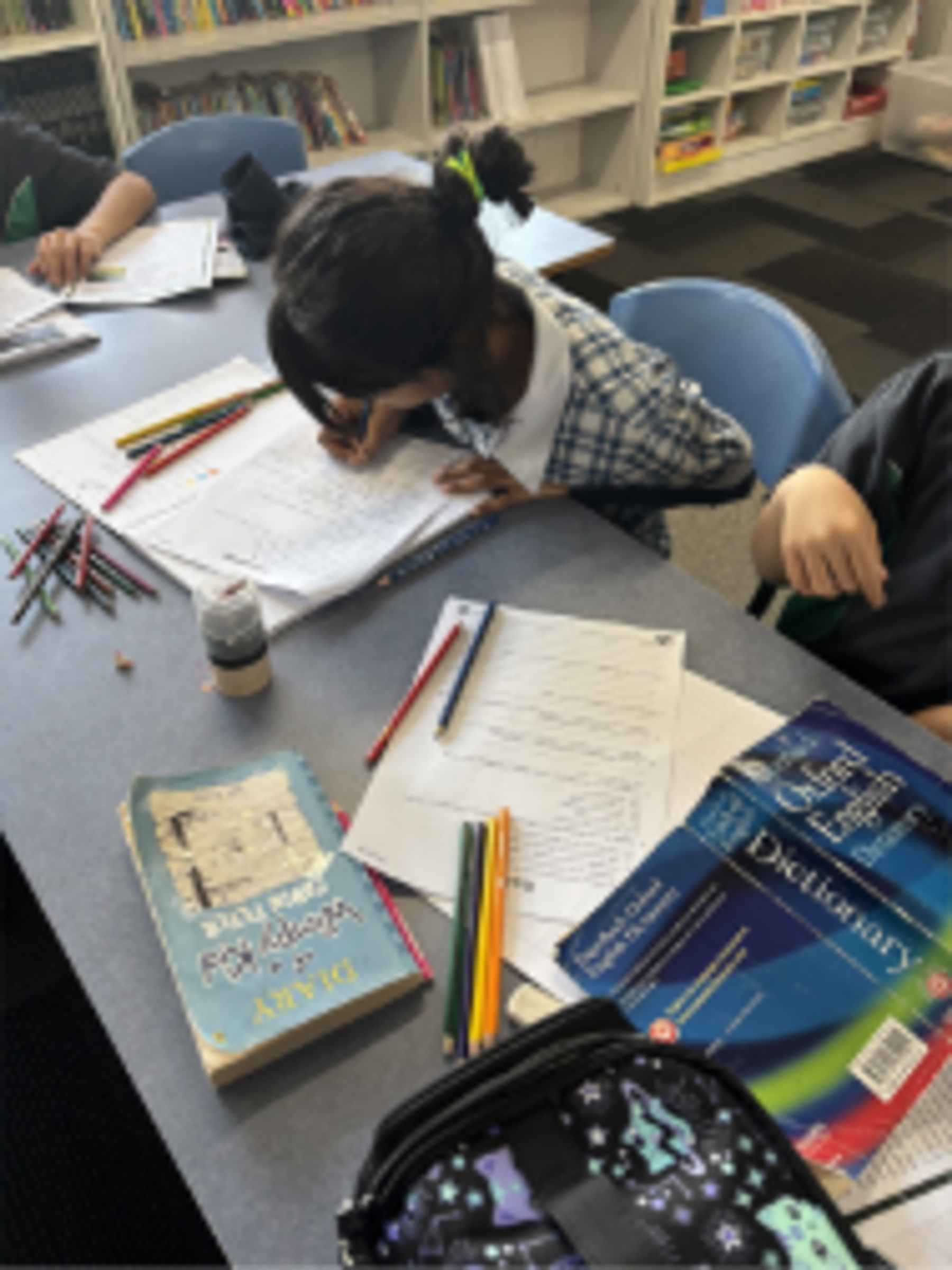
English
READING AND VIEWING / SPEAKING AND LISTENING
Summary of Learning:
In Term Four learners will focus on Explanation texts, where they will build on their knowledge of reading explanation texts using comprehension strategies such as summarising, questioning, text structures and language features to build literal and inferred meanings. Learners will be able to recognise how authors construct texts using cohesive and coherent pronouns (for example, ‘this’, ‘that’, ‘these’, and ‘those’) that link to something previously mentioned in the text. They will understand how an author uses text connectives to create links between sentences, for example, ‘however’, therefore’, ‘nevertheless’ and ‘in addition’. The learners will recognise how text connectives link sections of a text, providing sequences through time, for example; ‘firstly’, ‘then’, ‘next’ and ‘finally’.
In Term Four learners will also be begin to explore Poetry from different time periods. They will encounter new and interesting words whilst discussing poetic language, including adjectives that engage them emotionally and bring the authors subject to life.
Key Vocabulary:
(3-5 words or phrases for this learning area, written as a list)
- Explanation
- Comprehension
- Chronological order
- Temporal and casual conjunctions (when and why?)
- Formal voice
- Present tense
How can you support your child’s English learning at home?
- To further enhance your learners reading, encourage them to read an explanation text at home. A non-fiction text that interests them – it could be a letter from an author or an article from a newspaper.
- Encourage your learner to explore various types of poetry for example, new and old poems. Songs are also a form of poetry; they could try and write a song.
- Use Home Learning as another way to assist in their reading and comprehension. Have your learners change the types of books they read at home and ask them to tell you about them, including some of the text features.
WRITING
In Term Four students will explore Explanations text types, students will utilise their excitement about camp to generate their own explanatory text to hone their precise language writing skills. They will further investigate more complex connective language phrasing and words to allow them to link cause and effect into their explanations. Students will develop their ideas with elaborations, examples, or evidence while structuring well rounded paragraphs, embedding a linking sentence. While exploring Poetry, students will compare poetry from a range of different time periods. They will expand their vocabulary by experimenting with synonyms and antonyms and transfer new words they encountered when reading poetry into their own poetry pieces.
Key Vocabulary:
- Explanation
- Causal conjunctions, for example, therefore, consequently, due to.
- Temporal conjunctions, for example, whenever, as soon as, while
- Present tense
- Formal voice
- Third person
- Cyclical
- Sequential
- Causal
How can you support your child’s English learning at home?
To foster language development, have your child read an information text of interest and verbalise how something may work- Such as they may be interested in cars. Ask them “How does the steering wheel help move the wheels move of a car?”
Have students practise drawing and labelling cyclical diagrams, such as the “Water Cycle”
Encourage your child to use new causal and temporal conjunctions phrases in their Home Learning, such as mentioned in the above list.
Spelling/Grammar/Handwriting
This term in Spelling, students will explore Latin and Greek roots to expand their vocabulary and strengthen spelling accuracy. They will study roots such as rupt, tract, form, face, fact, fect, fice, photo, phon, aud, scop, mob, mot, mov, as well as number-related roots and homophones. In Grammar, students will learn to identify subjective and objective language, join sentences using a variety of connectives, upgrade nouns and verbs within arguments, and use adverbs of affirmation. They will also focus on sequencing ideas with temporal connectives, punctuating and writing direct speech, using ellipses effectively, and editing paragraphs for clarity. In Handwriting, students will refine their cursive writing by practising speed loops for the letters k and f, and applying these joins in regular sentence writing to build fluency and accuracy.
Mathematics
Summary of Learning:
This term, students will continue to build their mathematical knowledge through engaging lessons and real-world applications. Our focus will be on three key areas: Data Investigation, Operations, and Fractions, Decimals and Percentages. Across these topics, students will be encouraged to explore, problem solve and explain their reasoning, helping them grow as confident and flexible mathematicians.
In Data Investigation, students will plan statistical investigations by creating clear, objective questions, collecting and recording data, and organising their results in frequency tables. They will learn how to read and explain what different graphs show, using the data to compare results and draw conclusions.
In Operations, students will use rounding to the nearest ten and hundred to estimate when solving multiplication and division problems, helping them check if answers are reasonable. They will also choose and explain appropriate strategies to solve worded problems, showing their working and reasoning.
In Fractions, Decimals and Percentages, students will recognise and represent percentages using hundred grids and bar models, including identifying complementary percentages (e.g., 30% and 70%). They will convert between fractions (halves, quarters, tenths and hundredths), decimals and percentages, calculate and order percentages, work out totals from a given percentage, and apply these skills in everyday contexts.
Key Vocabulary:
Data Investigation | Operations | Fractions, Decimals and Percentages |
Data: Information we collect (like numbers or answers to a question).
Frequency: How many times something happens or is recorded.
Table: A way to organise data into rows and columns.
Graph: A picture that shows data, such as a bar graph or column graph.
Interpret: To explain what the data or graph shows. | Round: To change a number to the nearest ten or hundred to make it easier to work with.
Estimate: To make a smart guess about the answer before solving exactly.
Multiply: To add equal groups together.
Divide: To share a number into equal parts.
Strategy: A plan or method used to solve a problem. | Fraction: A way of showing part of a whole, written with a numerator (top number) and denominator (bottom number).
Decimal: A number that uses a decimal point to show parts of a whole (e.g., 0.25).
Percentage (%): A way of showing “out of 100” (e.g., 25% means 25 out of 100).
Equivalent: Different numbers or forms that mean the same value (e.g., ½ = 0.5 = 50%).
Complementary percentages: Two percentages that add up to 100% (e.g., 30% and 70%).
|
How can you support your child’s Mathematics learning at home?
- Data Investigation: Encourage your child to design a family survey, collect results, and represent them as a graph. Discuss what the data shows.
- Operations: Use shopping or cooking scenarios to practise rounding and estimating totals. Ask your child to explain their strategies.
- Fractions, Decimals and Percentages: Explore everyday percentages, such as discounts while shopping or statistics in sports. Use hundred grids or shaded diagrams to show how fractions, decimals, and percentages connect.
Inquiry
Question:
How might we use physical science in design?
Global Goal:
Global Goal 7: Affordable and Clean Energy
Summary of Learning
In Term 4, students will explore how different types of energy, motion, and forces are used in design. They will revise their understanding of push, pull, gravity, and friction before investigating forces through real-world examples. Students will examine how houses and spaces can be kept warm or cool across the seasons, identifying cost-effective ways to maintain comfortable temperatures by comparing methods such as insulation, weather stripping, and energy-efficient appliances. They will investigate conductors and insulators of heat, linking this to practical contexts at home and during camp.
Through hands-on science experiments, research, and the STEAM process, students will connect their learning to authentic applications by developing inquiry questions, engaging with engineers, and applying their knowledge to solve problems in their school and community. Their final projects will involve redesigning a space or house using TinkerCAD to make it more energy efficient.
Key Vocabulary:
- Force
- Energy
- Motion
- STEAM
- Insulations
How can you support your child’s Inquiry learning at home?
- Friction in Action: Test how far a toy car or ball rolls on different surfaces (tile, carpet, wood, sand). Record and compare distances to see how friction changes motion.
- Magnet Hunt: Use a magnet to test which household objects are magnetic and which are not. Sort and discuss why some metals are magnetic and others aren’t.
- Push and Pull Walk: While walking, have you child point out where they see pushes and pulls in action (opening a gate, pushing a swing, pulling open a door). They can describe which force is at play.
- Energy Efficiency Detective: Take a walk in the neighbourhood and notice features that might make houses energy efficient (solar panels, shaded windows, roof colours, double glazing, trees planted close to homes). Discuss how these help with heating and cooling.
Wellbeing
Summary of Learning:
This term in Wellbeing, students will continue their learning through The Resilience Project, focusing on empathy, mindfulness and gratitude. They will explore the importance of showing empathy towards others, recognise and appreciate moments of gratitude in everyday life, and understand how mindfulness can support emotional wellbeing. Through engaging activities such as board games, outdoor experiences and reflective discussions, students will develop practical strategies to build positive relationships, strengthen their sense of community and support their own mental health.
In Cybersafety, students will examine how empathy applies in online spaces, learn about the traits of responsible digital citizens, and explore ways to contribute to a kind and respectful online community. These lessons are designed to help students make thoughtful choices, build positive digital habits and navigate online interactions with confidence and care.
Together, these Wellbeing and Cybersafety experiences will help students develop emotional awareness, empathy, resilience and responsible decision-making skills. These are essential foundations that will support a smooth and confident transition into Year 5, where greater independence, responsibility and social awareness will play an increasingly important role in their learning journey.
Key Vocabulary:
The Resilience Project | Cybersafety |
Empathy Mindfulness Gratitude Resilience Positivity Reflection Emotional awareness Kindness Community Wellbeing Self-regulation Perspective Appreciation Connection | Digital citizen Online etiquette Empathy online Respect Responsibility Kindness online Privacy Consent Cyberbullying Communication Safety Digital footprint Positive choices Trustworthiness |
How can you support your child’s Wellbeing learning at home?
- Practise Gratitude: Encourage your child to reflect on things they are thankful for each day and share moments of gratitude together in conversation.
- Build Mindfulness: Support your child to take mindful breaks using breathing exercises, guided visualisations, or mindful walks to notice their thoughts and feelings.
- Develop Empathy: Talk about everyday situations at home, at school or in the community, and ask your child how others might feel and how they could respond kindly.
- Promote Safe and Respectful Online Behaviour: Discuss online safety rules, encourage thoughtful and respectful digital interactions, and check in regularly about your child’s online experiences.
4A
4B
4C
4D
4E
4F

